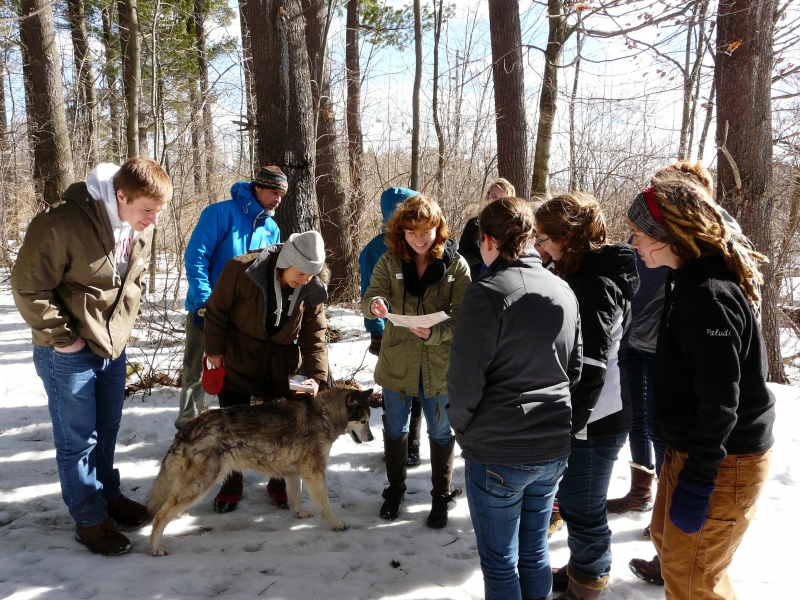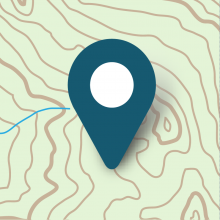
A modern Adirondack Amazon
I had my doubts about a tracking workshop staged the day after a rain-turned-ice storm in the middle of February. How little I knew! Although small in stature, Andrea and her dog Jasper (who regularly runs with coyotes!) commanded the conference room this Saturday in the Wachtmeister Field Station at St. Lawrence University for the sixth segment of the spring North Country Folk Series. She held her audience spell bound as she explained, "Tracking is not about identifying a print, it is about a different awareness." She described soft vision, which we often experience when we are driving, attained through "fox-walking," similar to walking meditation. When she described tracking mice for hours in sand, where "sand granules became boulders" the results of this sort of awareness became clearer.
Andrea went on to introduce us to the main categories of animals in the North Country (cat, dog, rabbit, rodent, weasel, raccoon, opossum, bear, deer) and their track shape, gate pattern, style of walking, claw imprints and number of toes. As Andrea loped around the room she said the best way to truly understand the way an animal moves is to move like them. The story a track can tell was far more involved and subtle then I could have ever imagined. Due to pressure releases, or the topography of a track, you can determine if the animal stopped, was speeding up, turned her head to the left or even if the creature was blinking. The class was in awe as she passed around plaster casts of prints she had found, along with various animal skulls, otherwise referred to as the animals’ "final tracks."

One cast she tenderly unwrapped, with the words, "You can't touch this one, cause I'd have to kill you if you broke it." It was the front paw of a wolf from Alaska. It was the size of my hand, fingers extended, and perfectly outlined down to the distinct toenails.
We ventured outside to meet a most glorious day. There was something distinctly spring about the blustering winds, fast clouds, too bright sun and blue, blue sky.

Basic Tracking Rules
1) Don't Step on the Track
2) Keep the light on the other side of the track
3) Tilt your head to the side for "side heading" where you look across the track at the topography
The first tracks we found were those of a deer. After Andrea's lesson we attempted to determine whether it was female or male. This meant looking to see if the prints had a back foot register, or the offset impression, slightly to the inside or outside. A mature female deer, due to wider hips, would leave a wider register to the outside of the tracks. We also spotted a weasel track, identifying it by the zig zag troth, and mink, dog, rabbit, and vole tracks. Once I started seeing the lights and shadows on the snow as impressions telling a story there were tracks to be found everywhere.

Too soon the hour and then some had passed and it was time to find our own tracks back to coffee and cookies.
My challenge to you, Nature Up North reader: find a deer track, take a photo and determine if it is a female or male, and then share your results by posting the photo as an encounter here at natureupnorth.org!
Happy tracking,
Emma

